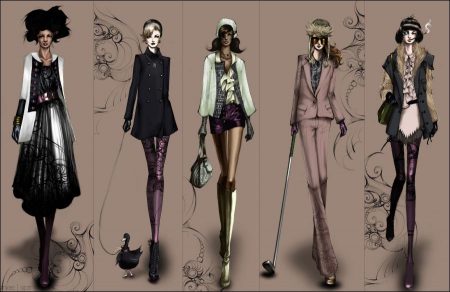Socio economic changes that occurred during the First World War 1914-18 and became accepted, changed the role of women in a way that no amount of campaigning by a few liberated ladies could have achieved. High fashion until the twenties had been for the richer women of society. Poiret had commissioned leading avant-garde photographers to photograph his work in the early 1920s; however, until after World War II fashion magazines and store catalogs most often used line drawings in iliustrations.
Illustrators such as Patou and Erte produced highly stylized work; Benito, Christian Berard and the American artist Eric provided an image of the clothes themselves, and their designers’ intended style, elegantly and economically.
In the twenties and thirties, however, black-and-white photography was becoming an important art form and photo portraits of famous personalities of the day highlighted their clothes as well as their looks (for example, Cecil Beaton’s photographs of Nancy Cunard wearing an armful of ivory and ebony bracelets). The Hollywood portrait publicity still in the 1930s added to the association between photography and glamor.
From the 1940s, photography came completely to dominate the fashion magazine although illustration was still common into the 1960s. Initially prized for its “truthfulness”, it is often less informative than line drawing, and can be just as mannered. Irving Penn in the United States, and Anthony Annstrong-Jones in Britain moved fashion photography towards a new informality and movement in the 1950s.
Continue Reading in Popular Culture
Views: 305



